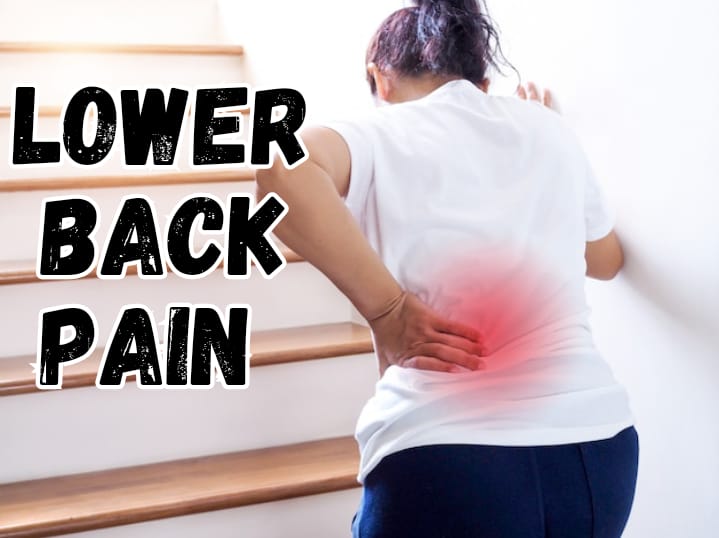Lower back problems are a prevalent health issue affecting millions of adults worldwide. From mild discomfort to chronic pain, these conditions can significantly impact an individual's quality of life and productivity. let's explore the causes of lower back problems, common medications used for management, and relevant statistics to shed light on the scope of this health concern.
According to the Global Burden of Disease Study, lower back pain is the leading cause of disability worldwide, affecting over 540 million people.
Causes of Lower Back Problems:
- Muscular Strain: Overexertion, poor posture, or sudden movements can strain the muscles and ligaments in the lower back, leading to pain and discomfort.
- Disc problems: With age, the discs between the vertebrae may deteriorate, causing pain and limited mobility. When the inner gel-like material of a spinal disc protrudes through a weakened area, it can irritate nearby nerves and result in lower backpain.
- Spinal Stenosis: The narrowing of the spinal canal due to bone overgrowth or tissue thickening can put pressure on the nerves, leading to pain and numbness.
- Osteoarthritis: The breakdown of cartilage in the joints can affect the lower back, resulting in pain, stiffness, and limited mobility.
- Scoliosis: Abnormal curvature of the spine can lead to lower back pain and discomfort.
- Injuries: Traumatic incidents, such as falls, accidents, or sports injuries, can cause fractures, sprains, or strains in the lower back
A study published in The Lancet estimates that lower back pain causes more global disability than any other condition.
However, there are several approaches that can help alleviate lower back problems and improve overall spinal health. Here are some strategies you can consider:
- Physical Activity and Exercise:
Regular physical activity can help strengthen the muscles supporting your lower back and improve flexibility. Low-impact exercises such as walking, swimming, or cycling can be beneficial. Additionally, specific exercises targeted at strengthening the core muscles and improving posture can provide relief.
- Proper Posture:
Maintaining good posture while sitting, standing, and lifting objects is crucial for preventing and managing lower back problems. Practice sitting with a straight back, using ergonomic chairs if necessary. When lifting heavy objects, bend your knees and use your leg muscles instead of straining your back.
- Weight Management:
Excess weight can put additional stress on your lower back. Maintaining a healthy weight through a balanced diet and regular exercise can reduce the strain on your spine and alleviate lower back pain.
- Heat and Cold Therapy:
Applying heat or cold packs to the affected area can help reduce inflammation and alleviate pain. Use a heating pad or take a warm bath/shower for muscle relaxation, or apply an ice pack wrapped in a cloth to reduce inflammation.
- Stress Management:
Chronic stress can contribute to muscle tension and exacerbate lower back problems. Engage in relaxation techniques like deep breathing, meditation, or yoga to help manage stress levels and reduce muscle tension.
- Medical Intervention:
In severe cases, medical intervention may be necessary. This could include prescription medications, injections (such as corticosteroids), or, in rare cases, surgical options. These decisions are typically made in consultation with a healthcare professional, based on the specific condition and its severity.
lower back problems account for the second most common reason for visits to healthcare providers up to 80% of adults experience lower back pain at some point in their lives.

 The National Institute of Neurological Disorders and Stroke states that around 80% of adults will experience lower back pain at some point in their lifetime. Lower back problems are a significant health concern affecting a large portion of the adult population. Understanding the causes and cures is crucial in addressing and managing these issues effectively.
The National Institute of Neurological Disorders and Stroke states that around 80% of adults will experience lower back pain at some point in their lifetime. Lower back problems are a significant health concern affecting a large portion of the adult population. Understanding the causes and cures is crucial in addressing and managing these issues effectively.









.jpeg)


.jpeg)
.jpeg)
.jpeg)
_(1).jpeg)

_(1)_(1)_(1).jpeg)
.jpeg)
.jpeg)
.jpeg)








.jpeg)
.jpeg)